MUNICIPAL COMPANY, CITY OF GOTHENBURG

ABOUT CCS
CCS, Carbon Capture Storage, means that carbon dioxide is captured and turned into liquid form using pressure and low temperature. It can then be safely stored underground and at the bottom of the sea, thus reducing emissions of greenhouse gases into the atmosphere. If the carbon dioxide is captured from a biogenic source, so-called BECCS, the proportion of carbon dioxide in the atmosphere can even be lowered.
CHOICE OF LOCATION
Gothenburg is an ideal location, with the largest port in Scandinavia and a number of carbon emission points, including large refineries and waste incineration plants. This would ensure that an investment of this nature and magnitude is both climate-smart and financially sustainable.
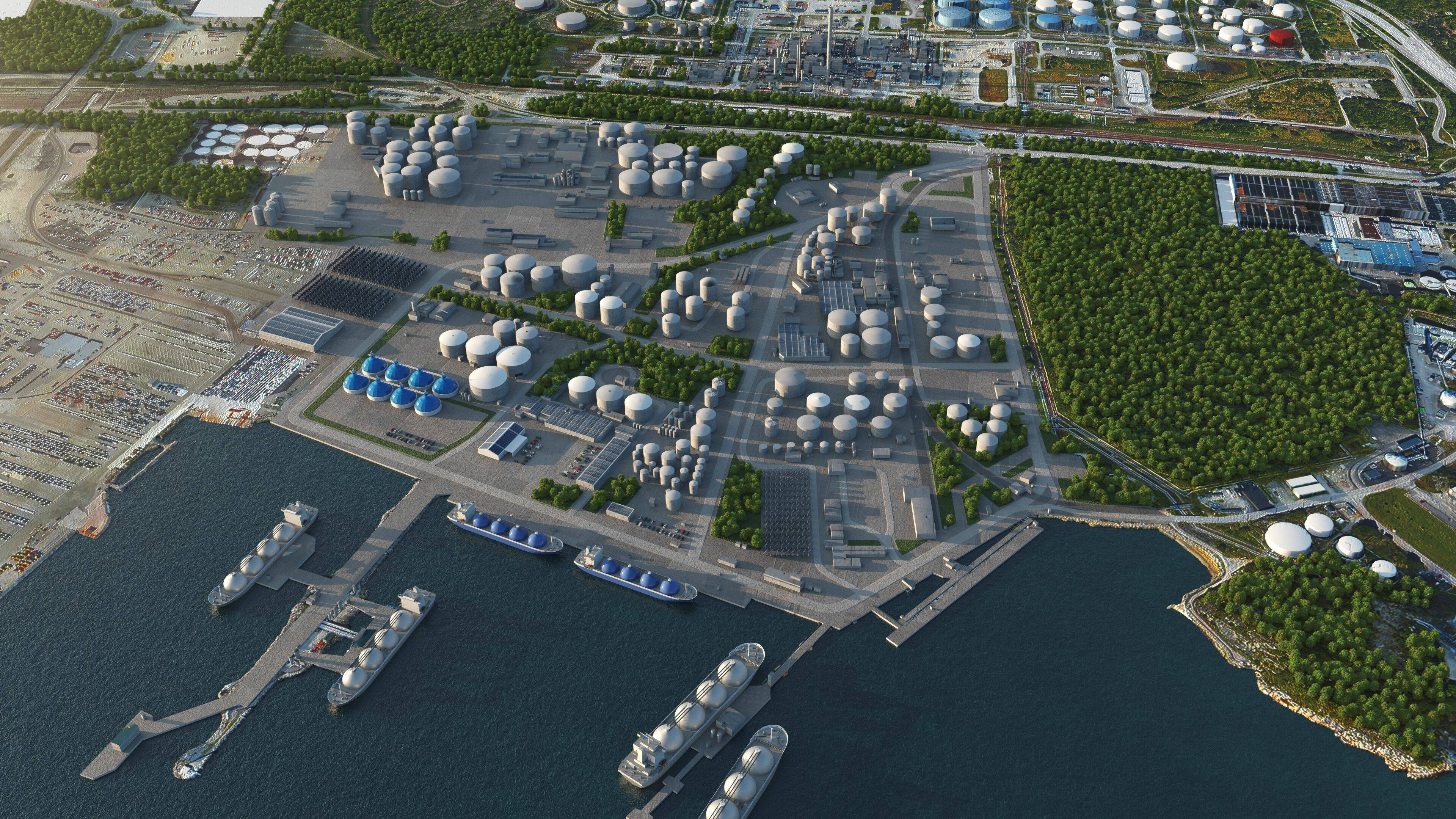
6
4
5
3
2
1
1
1
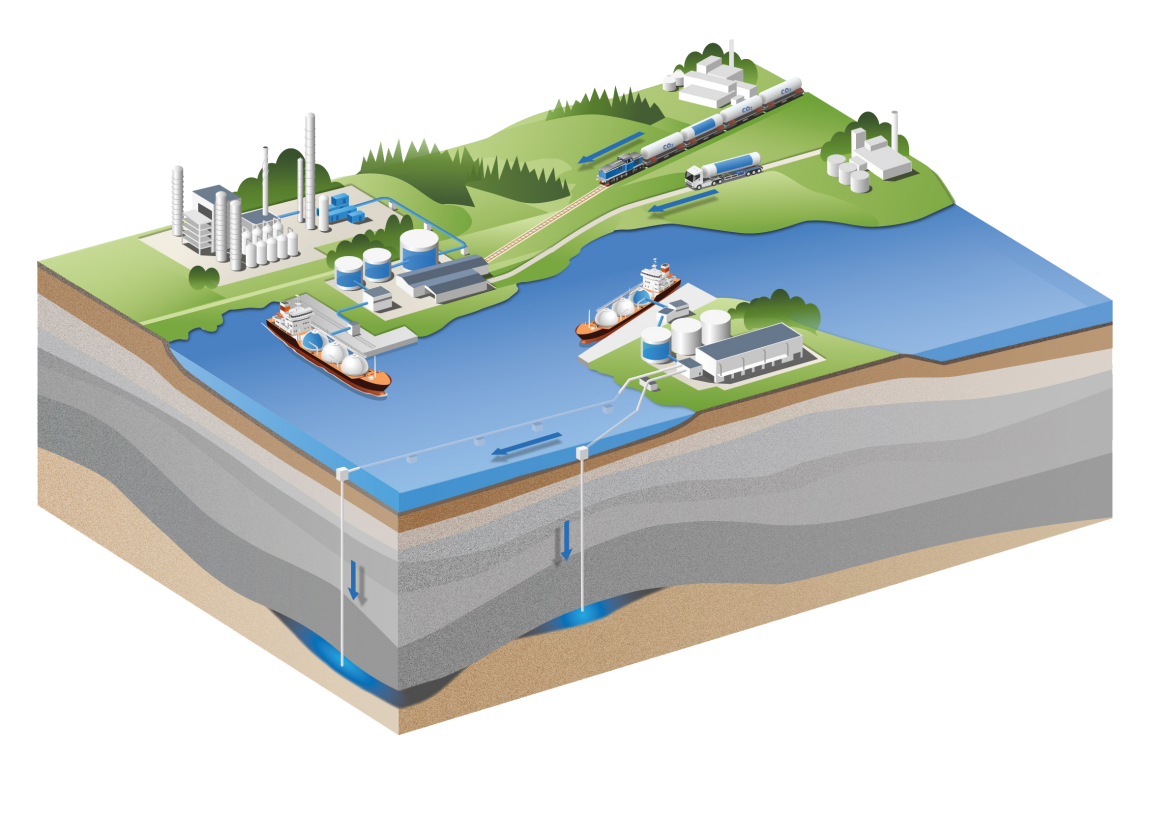
Carbon dioxide capture facilities.
Liquid carbon dioxide is transported through pipelines from capture plants nearby and by truck or railway from plants further away.
C02 hub intermediate storage site at the Port of Gothenburg.
Liquid carbon dioxide is loaded onto a ship using loading arms.
Receiving terminal from where liquid carbon dioxide is unloaded and pumped into rock formations 3,000 metres below the seabed.
Porous rock, with impermeable rock above, where liquid carbon dioxide is returned.
Lorem ipsum dolor sit amet, consectetur adipiscing elit.
The Port of Gothenburg together with partners are aiming to create a large scale CO2 hub with open access for third parties. The aim is to help early movers in Sweden with a cost-effective intermediate storage solution and contribute in creating a new logistics chain for captured carbon dioxide. To succeed in this, good collaboration with partners and actors within the new value chain is crucial. The focus is to develop a solution that is attractive to customers and ensure that the infrastructure owners drive large scale.
A collaboration project with partners was initiated in 2020 and in November 2022, phase 2 was concluded with the presentation of an in-depth feasibility study. Now the work is underway to shape the next phase and continue to work to create a large-scale hub for liquified carbon dioxide, which is extracted via carbon dioxide separation, CCS technology.
In order to reach the climate goals, we must find faster ways. We do that through collaboration. Here, together with partners, we are investigating the possibility of temporarily storing and transporting initially about 4 million tons of captured carbon dioxide per year, including third-party access. This applies from facility to quayside. To be able to do that, a functioning infrastructure is required in place. The basic idea is to be able to invest in an infrastructure system that should also be possible for more actors to use and thus increase the volumes of captured carbon dioxide. We want this large-scale CO2 hub to be open to everyone.
FULL-SCALE SOLUTION
CCS, Carbon Capture and Storage, is seen today as an important part of the transformation of the global energy system and several development projects are underway in the area. Both the IPCC and the EU have identified carbon dioxide capture as absolutely necessary to reach the climate goals. Here, a large-scale CO2 hub contributes by making it possible to transport the carbon dioxide to a final repository in a cost- and climate-efficient manner or utilise the collected carbon dioxide. This is not a small-scale test facility, but a full-scale solution that will make a real difference.
CO2 hub with open access for third parties in the Port of Gothenburg.
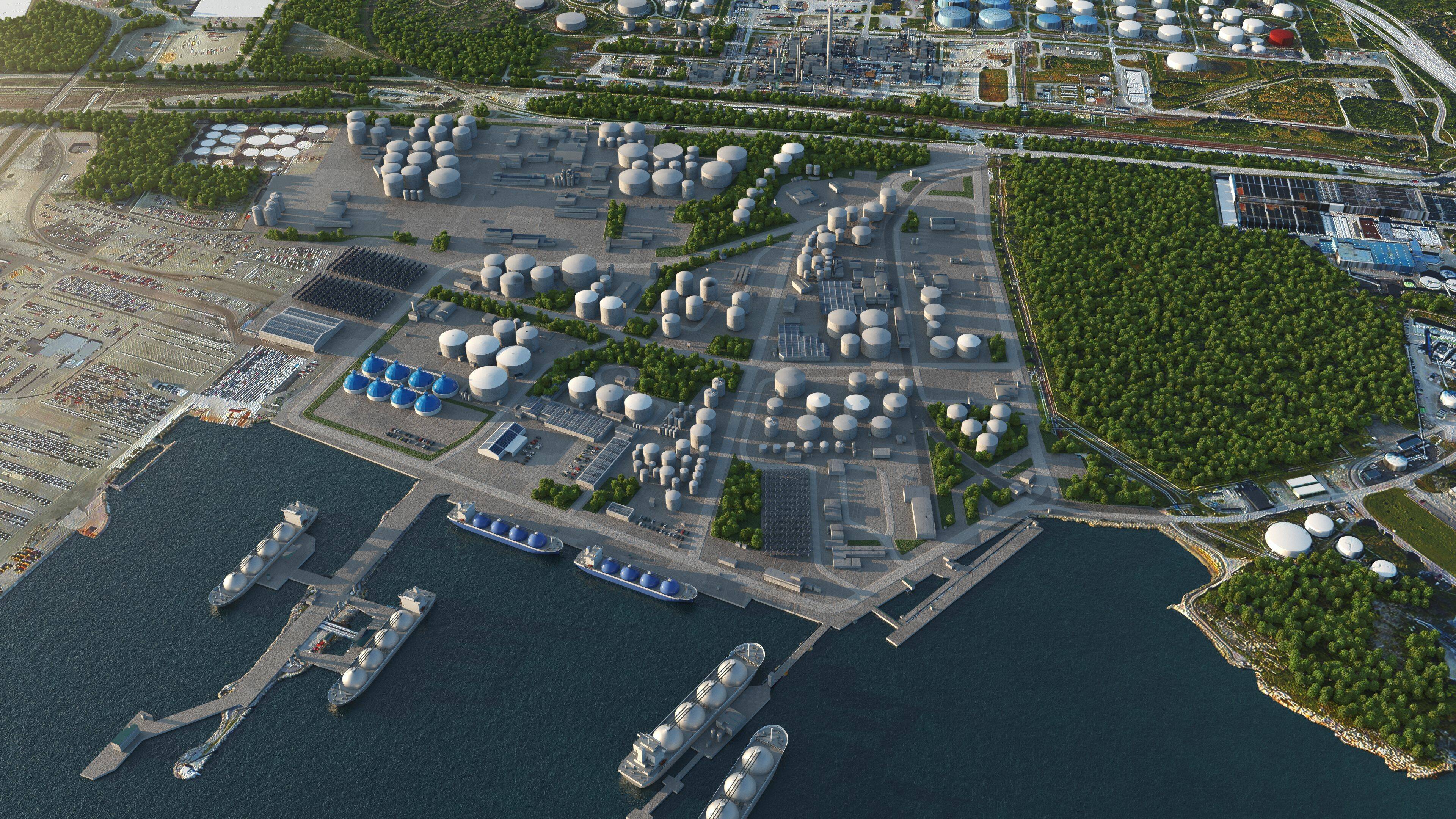
MUNICIPAL COMPANY, CITY OF GOTHENBURG

About CCS
CCS, Carbon Capture Storage, means that carbon dioxide is captured and turned into liquid form using pressure and low temperature. It can then be safely stored underground and at the bottom of the sea, thus reducing emissions of greenhouse gases into the atmosphere. If the carbon dioxide is captured from a biogenic source, so-called BECCS, the proportion of carbon dioxide in the atmosphere can even be lowered.
Choice of location
Gothenburg is an ideal location, with the largest port in Scandinavia and a number of carbon emission points, including large refineries and waste incineration plants. This would ensure that an investment of this nature and magnitude is both climate-smart and financially sustainable.

2
3
5
6
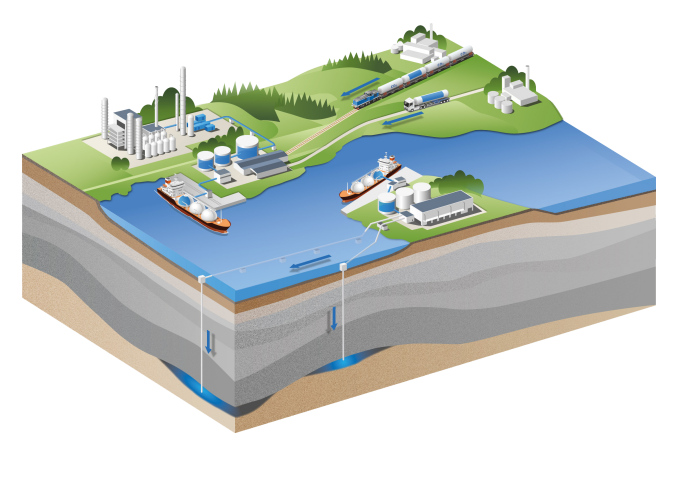
Carbon dioxide capture facilities.
Liquid carbon dioxide is transported through pipelines from capture plants nearby and by truck or railway from plants further away.
C02 hub intermediate storage site at the Port of Gothenburg.
Liquid carbon dioxide is loaded onto a ship using loading arms.
Receiving terminal from where liquid carbon dioxide is unloaded and pumped into rock formations 3,000 metres below the seabed.
Porous rock, with impermeable rock above, where liquid carbon dioxide is returned.
Lorem ipsum dolor sit amet, consectetur adipiscing elit.
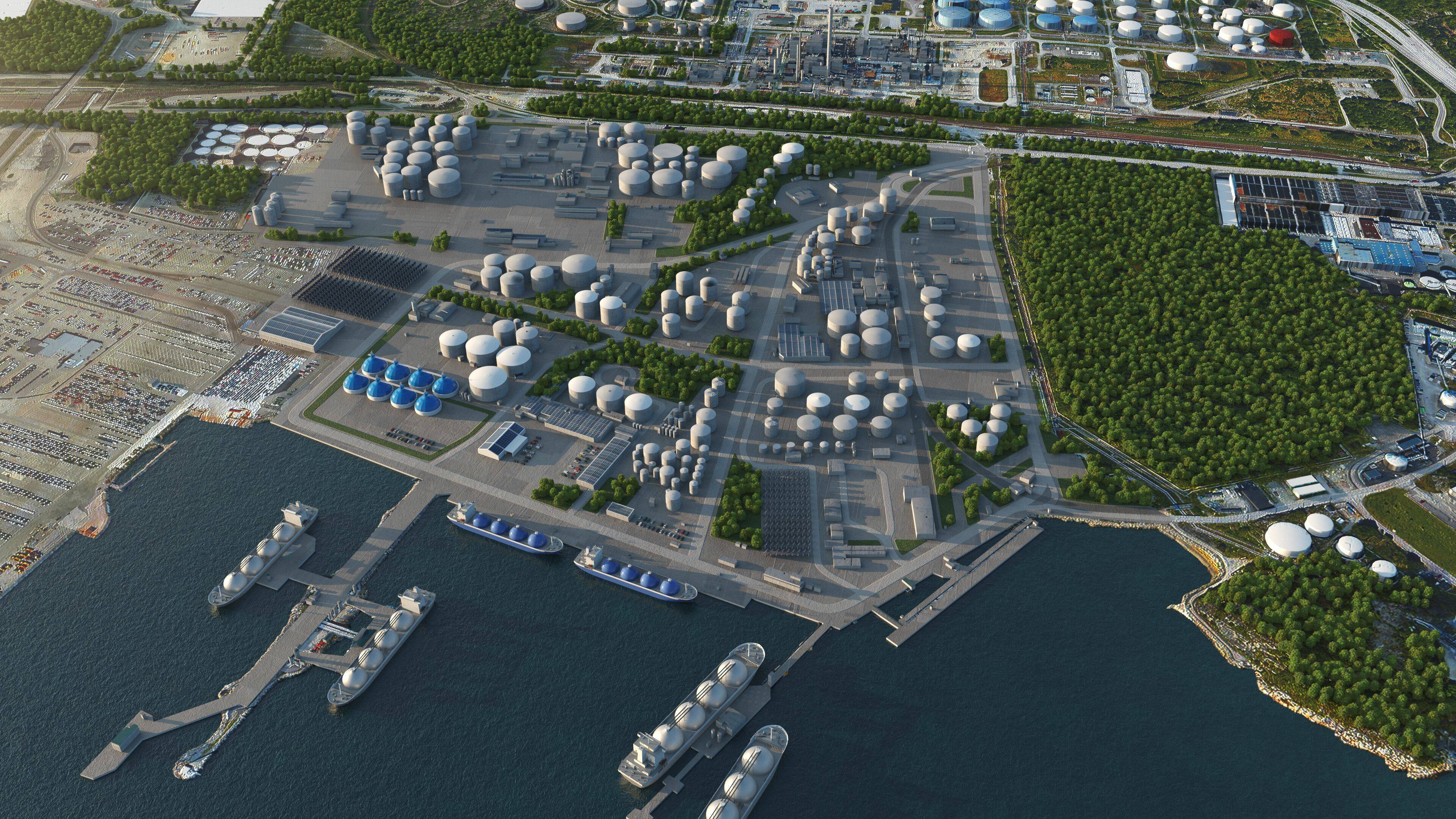
The Port of Gothenburg together with partners are aiming to create a large scale CO2 hub with open access for third parties. The aim is to help early movers in Sweden with a cost-effective intermediate storage solution and contribute in creating a new logistics chain for captured carbon dioxide. To succeed in this, good collaboration with partners and actors within the new value chain is crucial. The focus is to develop a solution that is attractive to customers and ensure that the infrastructure owners drive large scale.
A collaboration project with partners was initiated in 2020 and in November 2022, phase 2 was concluded with the presentation of an in-depth feasibility study. Now the work is underway to shape the next phase and continue to work to create a large-scale hub for liquified carbon dioxide, which is extracted via carbon dioxide separation, CCS technology.
In order to reach the climate goals, we must find faster ways. We do that through collaboration. Here, together with partners, we are investigating the possibility of temporarily storing and transporting initially about 4 million tons of captured carbon dioxide per year, including third-party access. This applies from facility to quayside. To be able to do that, a functioning infrastructure is required in place. The basic idea is to be able to invest in an infrastructure system that should also be possible for more actors to use and thus increase the volumes of captured carbon dioxide. We want this large-scale CO2 hub to be open to everyone.
Full-scale solution.
CCS, Carbon Capture and Storage, is seen today as an important part of the transformation of the global energy system and several development projects are underway in the area. Both the IPCC and the EU have identified carbon dioxide capture as absolutely necessary to reach the climate goals. Here, a large-scale CO2 hub contributes by making it possible to transport the carbon dioxide to a final repository in a cost- and climate-efficient manner or utilise the collected carbon dioxide. This is not a small-scale test facility, but a full-scale solution that will make a real difference.
CO2 hub with open access for third parties in the Port of Gothenburg.
